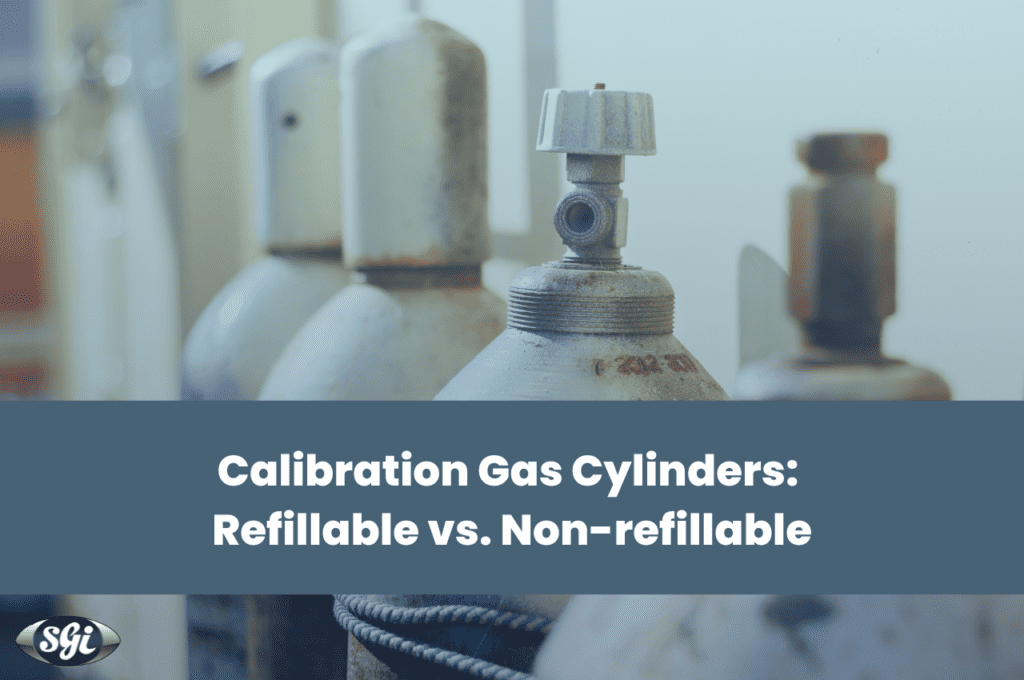
Compressed and liquefied gas cylinders are used to store, transport, and calibrate a variety of gases whether toxic or non-toxic across many industries. There are 2 types of gas cylinders one can choose from for the same: refillable or non-refillable (or disposable). Both the refillable and non-refillable cylinders are widely used and are therefore covered under various standards and regulations in most countries. One of these standards is the International Organization for Standardization, commonly known as ISO. EN ISO, in an attempt to ensure the safety of the operators and cylinder handlers, has covered the guidelines for both these cylinder types in 2 different regulations viz. EN ISO 17879:2017(E) and EN ISO 11118:2015(E).
The refillable cylinder is usually a generic gas cylinder with a refillable valve fitting. In order to ensure that all refillable chambers are covered in the safety guidelines, the EN ISO 17879 shares a guideline for all refillable or self-closing cylinder valves and not the cylinders. The regulation details the tests and conditions that the valve must fulfil in order to be certified and its specifications. Refillable cylinders are typically used for non-toxic gases and the cylinders are preferably refilled with the same gas avoiding cross-contamination hazards.
The non-refillable cylinder, also known as the disposable cylinder, is affixed with a permanent attachment (a valve) that disallows cylinder refills. This cylinder and its valve attachment are treated as one unit and are covered in EN ISO 11118. Meaning the EN ISO 11118 is a guideline that encompasses the entire unit i.e. cylinder as well as the sealing device or valve. These units are generally used to store and transport toxic gases. Since toxic gases are dangerous to the operator, handler, and the environment in general, specially when handling and transporting, using disposable, non-refillable cylinders ensures that the remnant gas does not find itself in an unlikely place. The guideline covers specifications such as materials, designs, construction, manufacturing, and testing for both the valve and the cylinder.
The cylinders are, thus, quite exclusive in nature with apparent differences. It is necessary to evaluate the uses of the cylinder, the calibration gases to be handled and the ISO certification of the product before it is put in service.
While we talk about the ISO regulations, it would be wrong to leave out the TPED or Transportable Pressure Equipment Directive laid out within the the European Economic Area for safer and efficient transfer of pressure equipment across the region. Whether refillable or disposable, empty or full, gas cylinders are required to conform to the directive in order to transport pressure equipment freely and safely. The directive requires the pressure equipment, also categorized as dangerous goods due to their health hazard, to comply with detailed regulatory requirements for the international carriage of dangerous goods by road (ADR), by rail (RID) and by inland waterways (ADN). The objects must bear the Pi marking when travelling, that indicates compliance to the directive. While the regulations and standardizations are maintained across countries for safety and efficiency in business operations, they are quite cumbersome to comply to. Ensure that your cylinders and valves are certified and audited for a hassle-free business experience. Reach out to us at SGI to inquire about our ISO and TPED certified valves and other equipment here.